
What is an F-stop and why is it important in Photography?by Robert Berdan
The most frequent question I get from new photographers is what is an F-stop? These numbers seem to confuse people and it's not surprising as the F-stop number gets bigger e.g. F11, F16, F22 - the diameter of the lens opening gets smaller. What also seems to puzzle folks is how does the F-stop affect the depth of field (the region that is in focus) in a picture. Below I explain and show in pictures where the F number comes from and why it is important in controlling the depth of field. In order to understand what an F-stop is I first need to explain what the focal length of a lens refers to. F-stops affect the depth of field, but they are not the only thing that affects depth of field in a picture so I will also explain some of these other factors. Please note if the amount of text looks intimidating then just scan the headers and look at the pictures it might be enough for you to gain an understanding of F-stops. If reading is not your thing you might want to consider private tutoring and in the future I may offer an explanation by video, but for now I have linked to additional resources at the end including video recordings by other photographers.
Focal length of LensesThe focal length describes the distance from the front of the lens to where it focuses light on the sensor or film plane. Focal length affects the field of view or how wide a scene you can capture with your camera and the overall magnification.
Lenses with short focal length e.g. 10 -24 mm are considered wide angle lenses. Normal lenses have a focal length similar to the human eye (human eye focal length is about 43 mm, but don't forget we have two eyes and view things with stereo vision). Camera lenses with focal lengths of about 35-70 mm are considered "normal" lenses as they produce a perspective similar to what we see with our eyes. For this reason normal lenses are sometimes preferred by photo-journalists. Finally we have telephoto lenses (70-100 mm or longer) that have a narrow field of view and magnify the image. These lenses are often used in portraiture, sports, and wildlife photography. Some lenses have a fixed focal length (e.g. 24 mm lens), others have variable focal lengths (e.g. zoom lenses like a 70-200 mm lens). At one time single focal length lenses produced sharper images then zoom lenses, today many zoom lens are just as good as some of the fixed focal length lenses.
10 mm (ultra wide angle ), 12-24 mm (zoom wide angle), 50 mm Normal lens, 70-200 mm (zoom telephoto lens). The focal length of a lens also determines the field of view that can be captured in a picture as shown by the white rays below.
The simple relationship is that the longer the focal length the narrower the field of view and the greater the magnification. Some telephoto lenses have such a narrow field of view that simply locating your subject in the viewfinder e.g. a bird, can become challenging.
Lens ApertureThe lens Aperture refers to the diameter of the lens opening, the relationship of the diameter of the opening and an F-stop will be explained further down the page, however you can see that as the opening gets smaller the F-stop number gets bigger.
When you purchase a lens it usually indicates the maximum aperture or lens opening that the lens can achieve and it is marked on the lens e.g. 50 mm F2.8 lens has a maximum aperture of 2.8. Some zoom lenses have two numbers e.g. F3.5-F5.6 which means the maximum aperture changes depending on the zoom setting. There are also zoom lenses with a fixed maximum aperture (e.g. 70-200 mm F2.8 lens) these are generally more expensive and tend to be heavier and larger in size.
Above left is a 12-24 mm focal length zoom lens that has a maximum aperture of F4. On the top right is an 18-200 mm Zoom lens with a variable maximum aperture of F3.5-5.6. As this lens is extended to 200 mm, the maximum aperture becomes 5.6 because the lens becomes longer and when you divide the maximum aperture (diameter of the lens opening) into the longer focal length to determine the F-stop - the best it can produce when the lens is extended is F5.6 (see below for an explanation). Almost all camera lenses are fitted with a moveable diaphragm that allows photographers to vary the aperture of the lens opening and hence the amount of light it allows into the camera. In modern lenses, when you modify the aperture either by turning a ring on the lens or using a dial on the camera - this changes the lens aperture, but the aperture actually only closes down when you press the shutter button. The reason the aperture closes only when you press the shutter (or a depth of field preview button) is so that the photographer can focus and compose with the maximum amount of light. Older cameras in the 1960's did not have this feature and the viewfinder would darken when you reduce the aperture. If your camera has a depth of field preview button (better cameras do) check your manual and learn where its located and how to use it. The position of the button could be on the lens or usually somewhere on the camera close to where the lens attaches to the camera body.
On the Nikon D2X camera the depth of field preview button is located near the top of the lens mount, but its position varies on different camera brands and may not be present on cheaper (under $1,000) cameras. Almost all camera lenses are fitted with a moveable diaphragm inside the lens. By adjusting the camera's Aperture measured in F-stops you are adjusting the the aperture to increase or decrease in diameter of the lens opening as shown below.
Above - If you were to look through a lens when the aperture is closed down to different F-stops you it would look like the pictures above. The bigger the F-stop number, the smaller the aperture or hole through which light passes through your lens.
This picture was taken with the lens at its maximum aperture F1.8 - notice that the background is out of focus.
This picture was taken with the lens at its smallest aperture F22 - notice that everything is in focus - this is why photographers use F11, F16 or F22 for landscape photos in order to get the maximum depth of field. Intermediate F-stops will provide intermediate depths of field. Ok so where does the F-stop number come from? Actually very simple math. You divide the focal length of the lens by the diameter of the lens opening or aperture. The reason a lens has several F-stops is because there is a variable diaphram in side the lens that we can control.
To calculate the F-stop, we divide the focal length of the lens by diameter of the aperture or hole that allows light in.
Note that as the aperture (lens opening) gets smaller the F-stop gets bigger and this is why so many folks find F-stops confusing. In technical terms we say the F-stop is inversely proportional to the diameter which means the same thing. The reason it is important is that as the aperture gets smaller (F-stop gets bigger) - the depth of field or region that is in focus increases. This means is that if you want to take a landscape photograph and have as much of the picture in focus use small apertures (F11 to F22) and when we want a shallow or short depth of field we choose wider apertures (e.g. F1.4, F2.8, or F4). Of course sometimes we want a depth of field that is intermediate and we may choose F5.6 or F8.
Fence posts with hats near Longview, AB. On the right we have a shallow depth of field when I used F2.8 and the depth of field became greater when I used F16. I was quite close to the fence post which is why in the picture on the right the background is still not completely sharp. Some things you should know about F-stops is that a lens produces the sharpest pictures when using the middle F-stops F5.6, F8 or F11. When a lens is used wide open often the sharpness at the edge of the picture suffers a little bit, and if you use very small apertures e.g. F22 the image becomes a little softer due to the bending of light around the edges of the aperture diaphram due to the diffraction of light waves. As a photographer you decide what is the important when you take your pictures. Often the depth of field is the most important element which is why I generally recommend setting your camera A or Aperture priority mode most of the time.
Why aren't the F-stop numbers always nice round numbers?The aperture that controls the light coming through your lenses is variable and on some cameras it is possible to set the aperture at intermediate values of either half or one third stops. The F-stops marked in green in the scale below represent whole F-stops, each increment in whole F-stops results in a decrease in light entering the lens by 50% which is also equivalent to one jump in shutter speed 1\30, 1\60, 1\125, 1\250 etc. So it's convenient to use whole F-stops though modern digital cameras can adjust the shutter speeds in smaller increments. The diameter of the aperture required to reduce the amount of light entering the lens by 50% does not always fall on full or round numbers.
F1.0 means the lens focal length and diameter (aperture) are equal - there are avery few F1.0 lenses and I have never even seen one. Lenses with a maximum aperture of F1.2 or F1.4 are common, they are generally expensive and used to photograph in very low light and\or to create pictures with a very shallow depth of field. I use a Canon 24 mm F1.4 lens to photograph the Aurora so I can use short shutter speeds. If you don't shoot in low light then you can save yourself a lot of money by buying lenses with larger maximum apertures such as F4.
Table showing the relationship between F-stops and shutter speeds. When you change one of these parameters the camera compensates and changes the other (unless you happen to have your camera in M or manual mode in which case you need to change both). The shutter speed numbers e.g. 250 mean 1\250 of a second, 4 means 1\4 second, 1S means 1 second.
Choose your shooting mode by selecting, M, A, T or P on the camera Dial. A means Aperture priority - you control the Aperture or F-stop and the camera modifes the shutter speed. This is the mode I use most frequently. In conclusion, the aperture or lens opening measured in F-stops affects the depth of field in your pictures and the amount of light entering your lens. Large apertures are associated with small F-stop numbers e.g. F2.8 and shallow depth of field, whereas large F-stops (e.g. F16) are associated with small apertures and more depth of field in your pictures.
Picture of Donna at F2.8 note the background is out of focus and the faster shutter speed.
In this picture I used F22, the background is now in focus but I had to use a very slow shutter speed combined with a fill flash. If you understand that F-stops affects the depth of field in the picture and that large apertures (openings) have small F-stop numbers F2.0, F2.8, F4.0 and small apertures have large F-stops (F11, F16 or F22) then by choosing certain F-stops you will be able to control the depth of field in your photographs. In addition, small F-stops (F2.8) allow you to use faster shutter speeds which is often more important then depth of field in sports and wildlife photography. Depth of Field can also be affected by several other factors like:
The closer you move your camera and lens to a subject the shallower the depth of field becomes no matter what focal length lens you use. If you get really close as for instance when using a macro lens, your depth of field can sometimes be just a few millimeters. The further away an element is that you focus on the greater the apparent depth of field. You can do a simple experiment that might help you understand this. Take your finger and hold it about an inch from your nose and focus on your finger with your eyes. Your finger should be sharp but the background will be soft and out of focus. As you move your finger farther away - you should be able to focus on both your finger and the background. If you do the same thing with a lens you will see a similar result (see pictures below).
GENRALLY I RECOMMEND SETTING YOUR DIGITAL CAMERA TO APERTURE PRIORITY MODE MOST OF THE TIME I recommend that if you shoot with a Digital SLR camera you set your camera to A or Aperture priority mode. You set the aperture using your cameras dial or lens ring, the camera will automatically compensate and adjust the exposure. Just make sure your shutter speed is 1\30 second or faster if you are hand holding your lens. If you are using a tripod then the shutter speed can be longer. If your camera has a depth of field preview button learn how to use it, otherwise examine the LCD monitor after you take your pictures with different F-stops Finally if you photograph wildlife with a telephoto lens, always keep the lens at its maximum aperture (smallest F-stop) in order to shoot at the fastest shutter speed.
IN SUMMARY
Both lenses have 300 mm focal length and can magnify about 6X. The larger more expensive lens (F2.8) can focus more quickly on fast moving objects and can be used in dimmer lighting conditions which is why it is the preferred lens of sports and serious nature photographers. The smaller lens, has a maximum aperture of F4 so it can not focus as quickly, but it is more compact, easier to handle and carry with you. The best choice depends on what you can afford and what you plan to do with your camera. I own both lenses, I take the smaller one hiking and the bigger one for photographing birds in flight.
For more information about F-stops see the links below
|

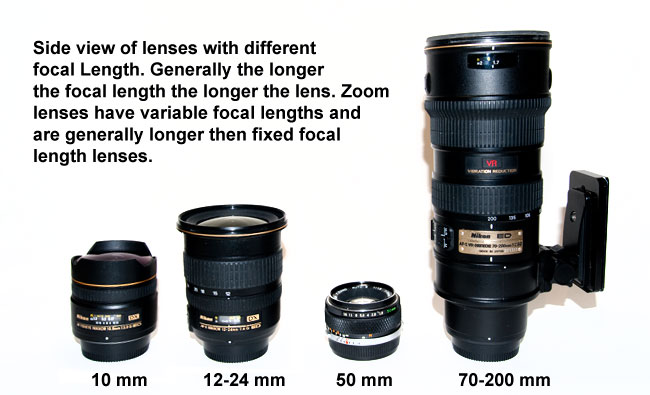
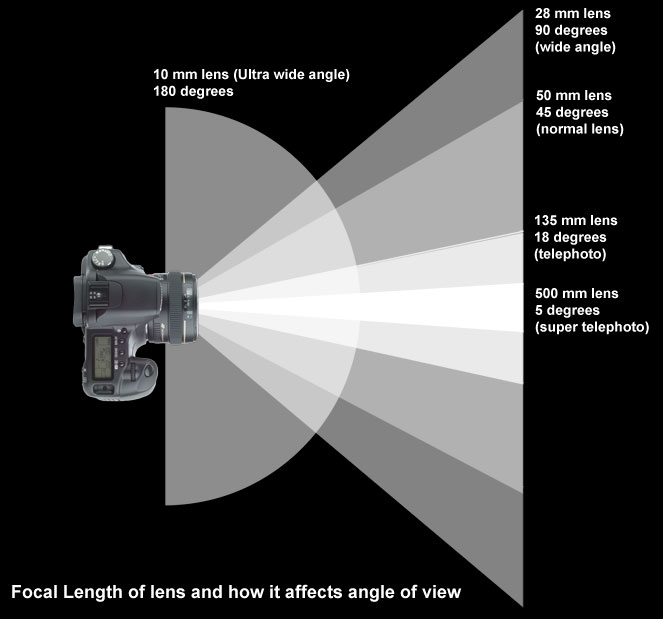


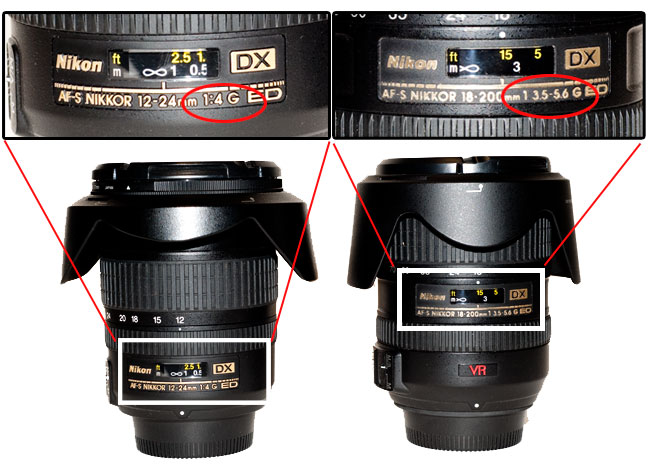

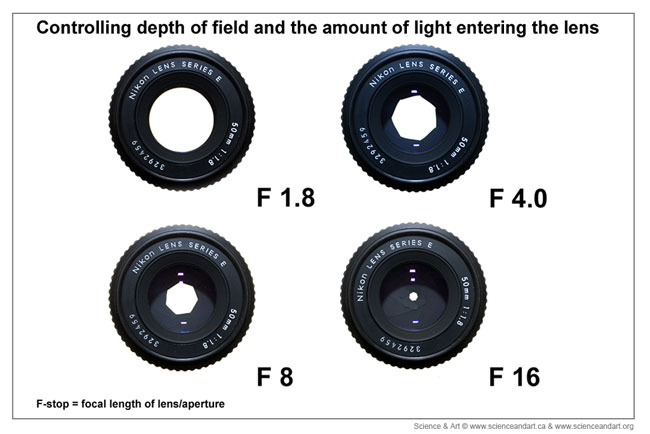







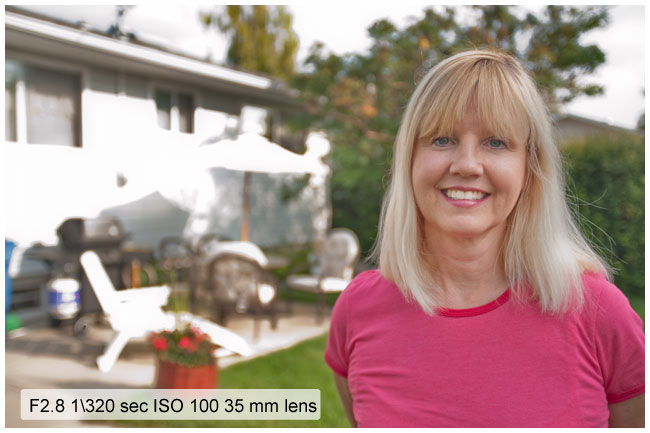
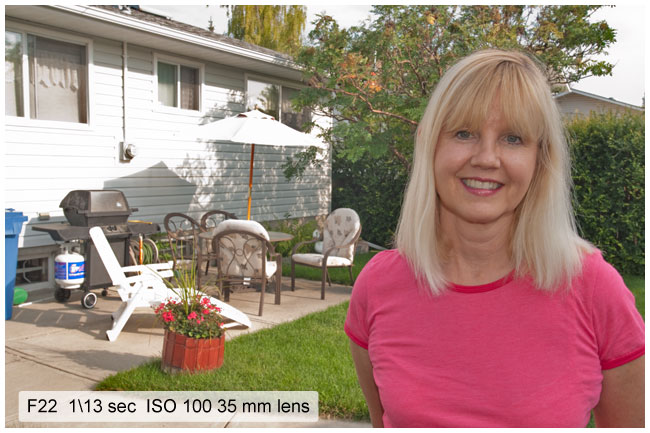

 .
.